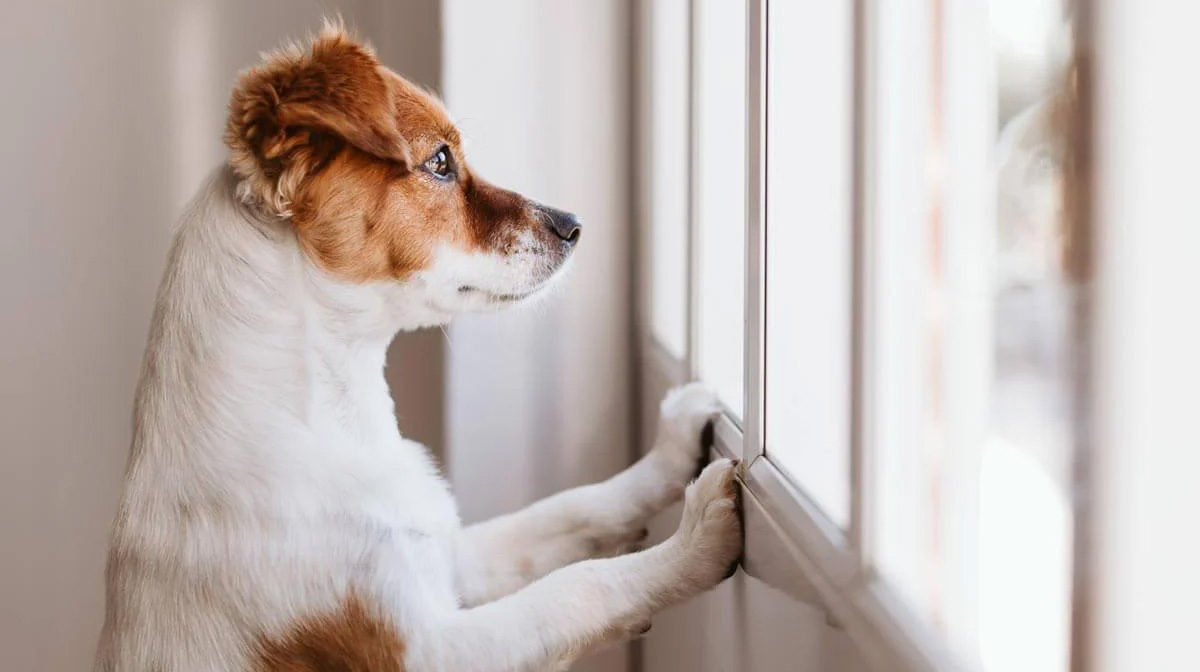
During the recent COVID-19 pandemic, uncertainty about the future and concern for the health of loved ones caused many of us to feel anxious and stressed. Luckily our pets were there to save the day, helping us remain calm in times of worry and providing a constant source of companionship. However, we’re not the only ones who have benefitted. Our pets have become used to spending more time with us, something they’re likely to miss once we go back to normal ways of working.
So, now that many people are heading back to work, how can we repay the favour for our furry friends? James Wellbeloved investigate how to support pet wellbeing.
Pets and the pandemic
For many during the pandemic, taking their dog for a daily walk gave them a sense of purpose, as well as the chance to get out of the house for some fresh air, while others relied on a cuddle with their cat to cheer them up. Owning a pet has proven to boost health and wellbeing, so it’s no surprise that there have been numerous reports of dogs and cats helping their owners with loneliness and anxiety throughout the lockdown period. For people who had to self-isolate alone, a pet will have provided some much-needed company, friendship and affection during a very difficult time.
Returning to work
During lockdown, yours and your pets’ routines are likely to have changed slightly, with different times for playing, walking and feeding. As routine is an incredibly important factor in cat and dog wellbeing, if you’re making the move back to the office in the next few weeks or months, you’ll need to re-establish a routine with your pets – ideally the same one you had before lockdown. This means feeding your pets at the same times each day and taking dogs for regular walks in the hours outside work.
Any changes need to be made slowly over time rather than suddenly, to avoid causing your pet stress. Gradually adjust meal and walk times so your pet doesn’t notice the time changing. You should also aim to spend less time in contact with your pet during the day, so it won’t be such a shock when you leave the house for work. Try distracting them with toys during these times, so they don’t have to rely on you for entertainment. You could even practice leaving the house for short periods of time in the run-up to your return to work to help your pet adjust.
Be calm and reassuring with your pet both before you leave for work, and when you return home. Making a big fuss of them risks reinforcing your pet that you being there is key to their happiness. Leaving some food releasing puzzles or some safe and chew-friendly toys for your pet to investigate while you’re out may help to distract them from your absence. Some more nervous pets are also calmed by the radio or TV being left on.
With a solid plan in place, you should be able to successfully return to work in a way that supports both dog and cat wellbeing. After time and practice, you should notice that your pet has re-adjusted to being on their own again and seems happy to amuse themselves while you’re not there.

Separation anxiety in pets
At times, our pets’ distress at being apart from us is so great that it can develop into a condition called separation anxiety. Separation anxiety is more commonly found in dogs. While you’re out of the house, pets may howl or bark, scratch the walls or furniture, or even urinate indoors.
Although pets shouldn’t be left alone for extended periods of time, it’s good to get your pet used to being on their own. Dogs tend to be more dependent than cats and require more attention from their owners. You can train a dog to be alone, but it requires patience and can be a time-consuming process.
As naturally more independent animals, cats are usually happy to spend some time apart from you – and most cats enjoy the opportunity for some downtime while their owners are out of the house. However, this doesn’t mean that cats aren’t sensitive to change, and any alteration to their routine can still cause them to feel stressed.
If you believe your pet may have separation anxiety, there are certain steps you can take to address the problem.
Should I get a pet if I’m at work all day?
Dogs and cats – and dogs especially – are sociable animals who enjoy company and attention, so leaving them alone for extended periods is not fair on them. If you have a partner or someone else living with you, you could ask them to look after your pet during the day.
If you are thinking of getting a puppy or a kitten, leaving them on their own for longer than a couple of hours isn’t advised until they are older, so you will have to take this into consideration if you have to work during the daytime.
Occasionally employers will allow employees to bring their pets into work, or you can arrange for them to go to dog day care or a family member’s house while you’re out. If you are planning to spend long periods away from the house and the above options are not an option for your lifestyle, then the best thing to do might be to wait until a time in your life when you have more time to spend with a pet.

Related Articles








